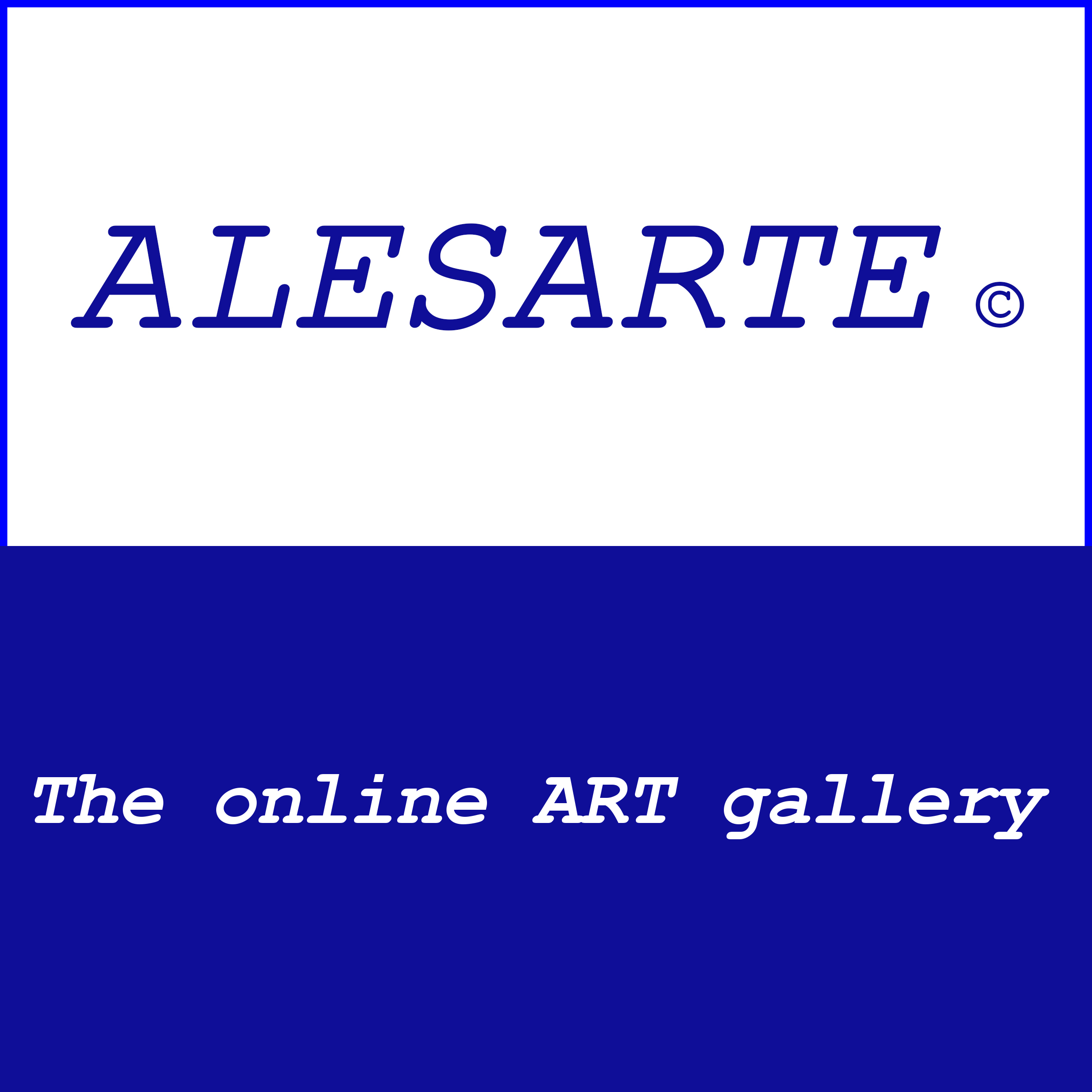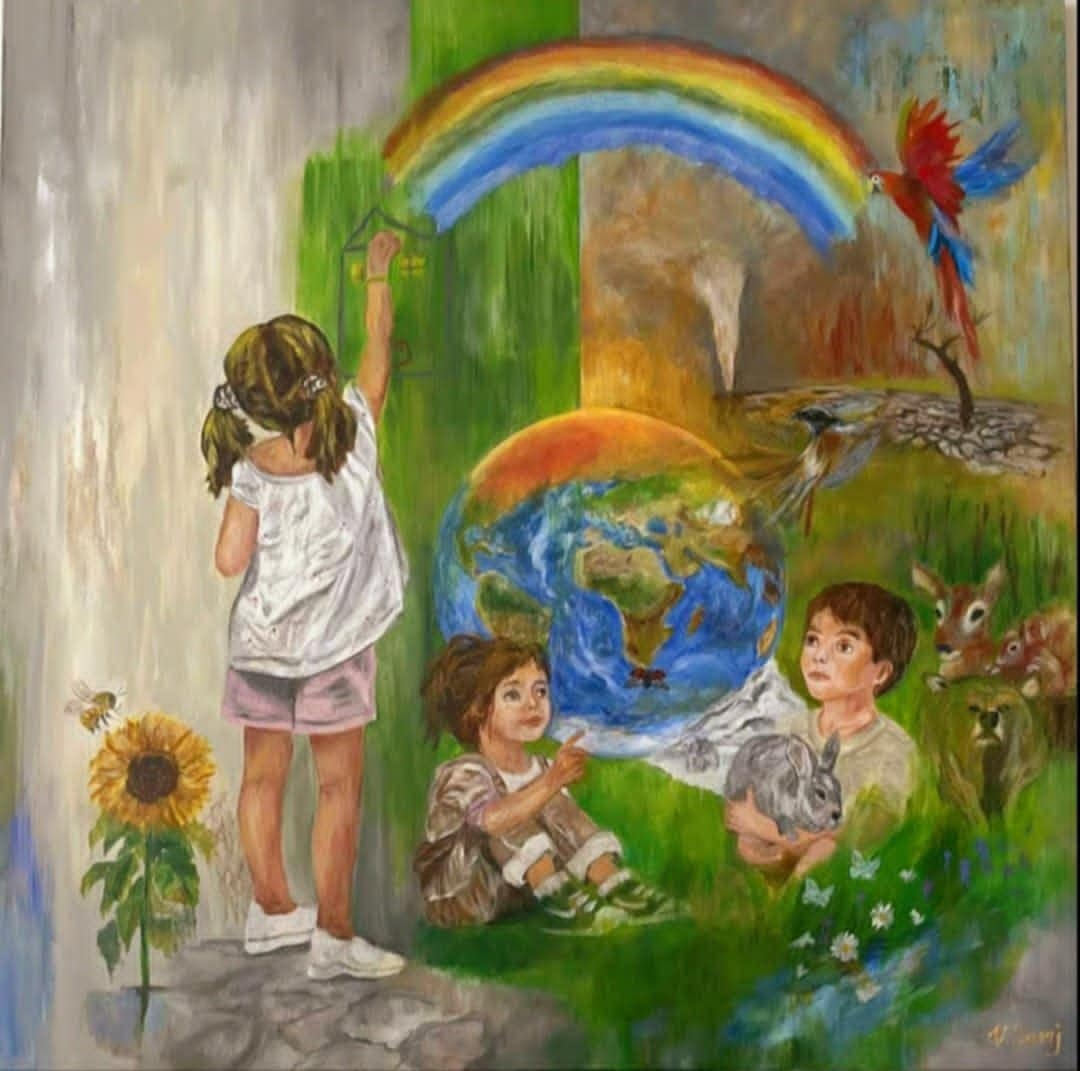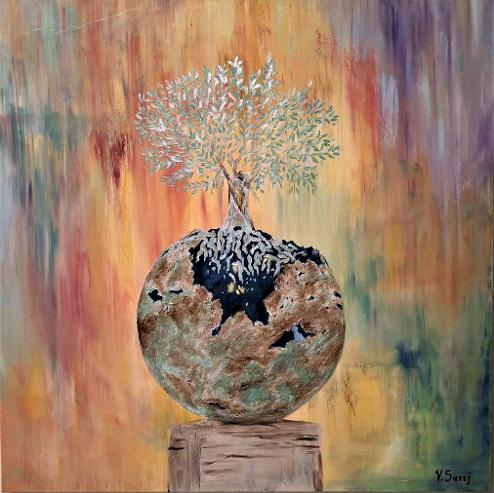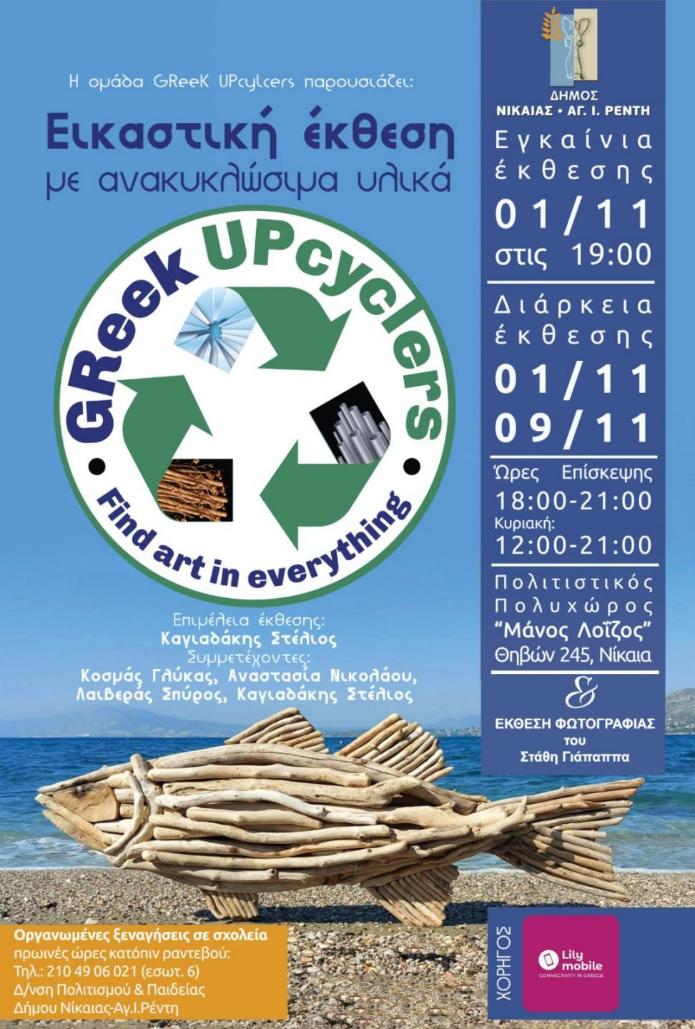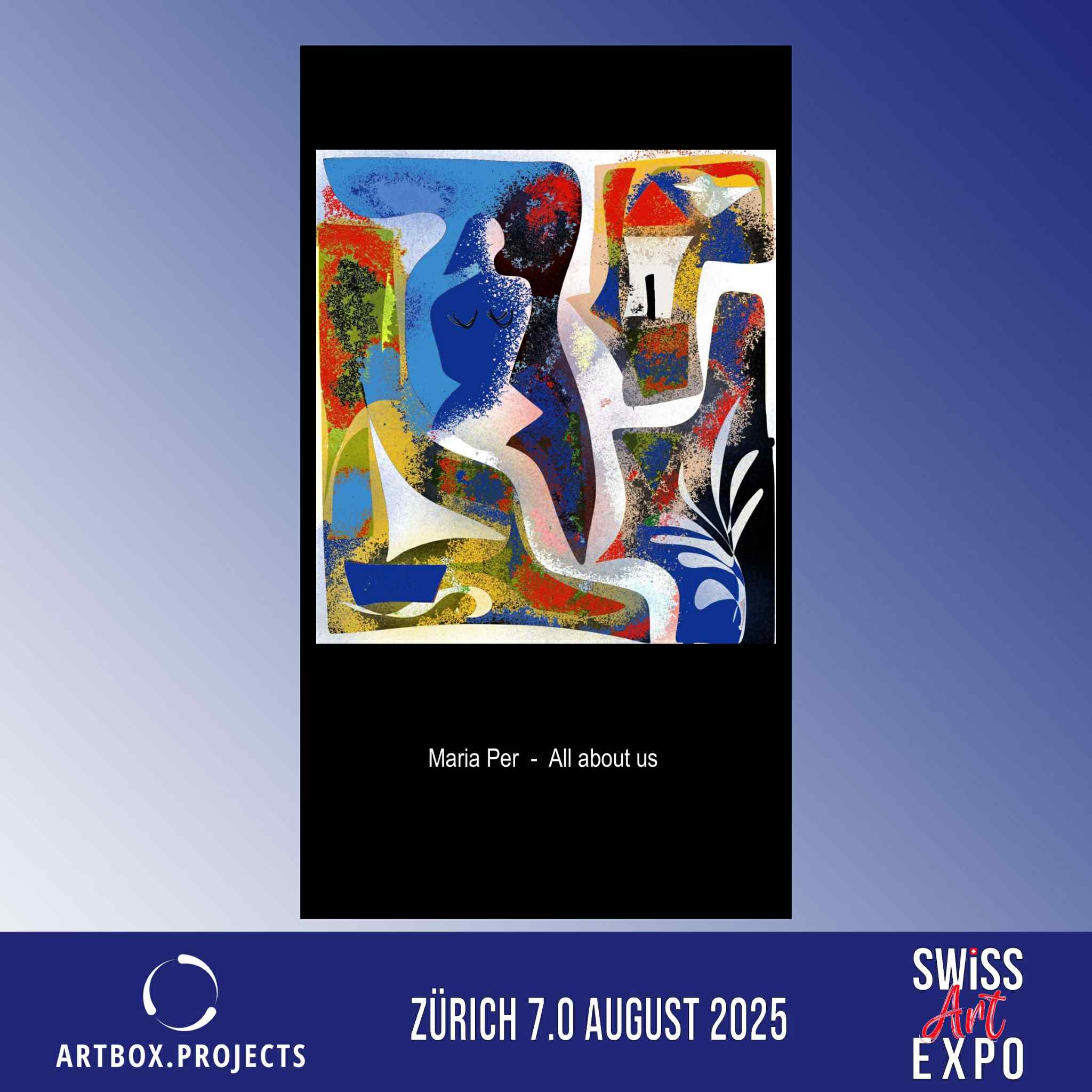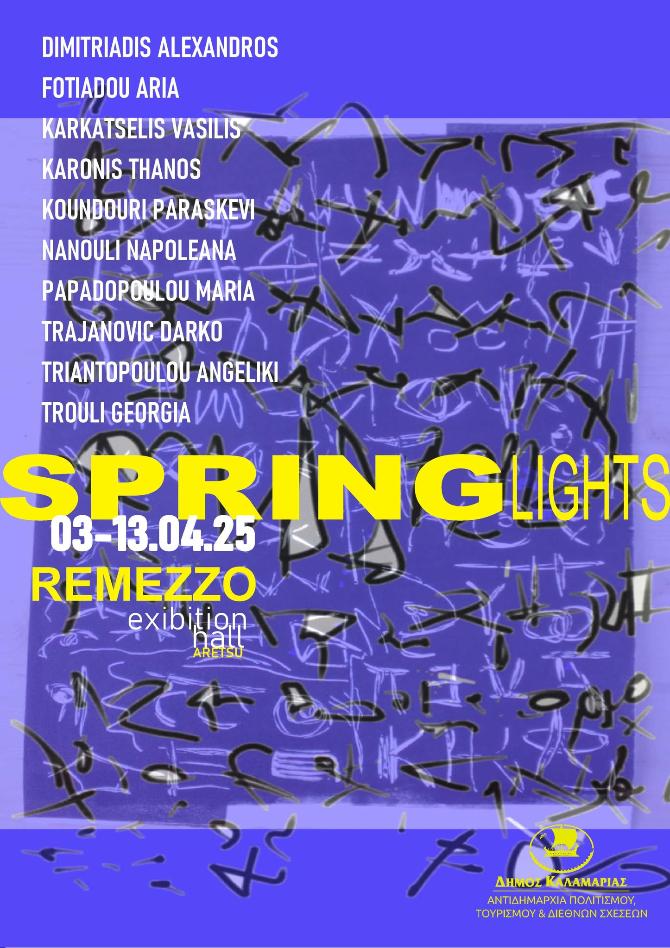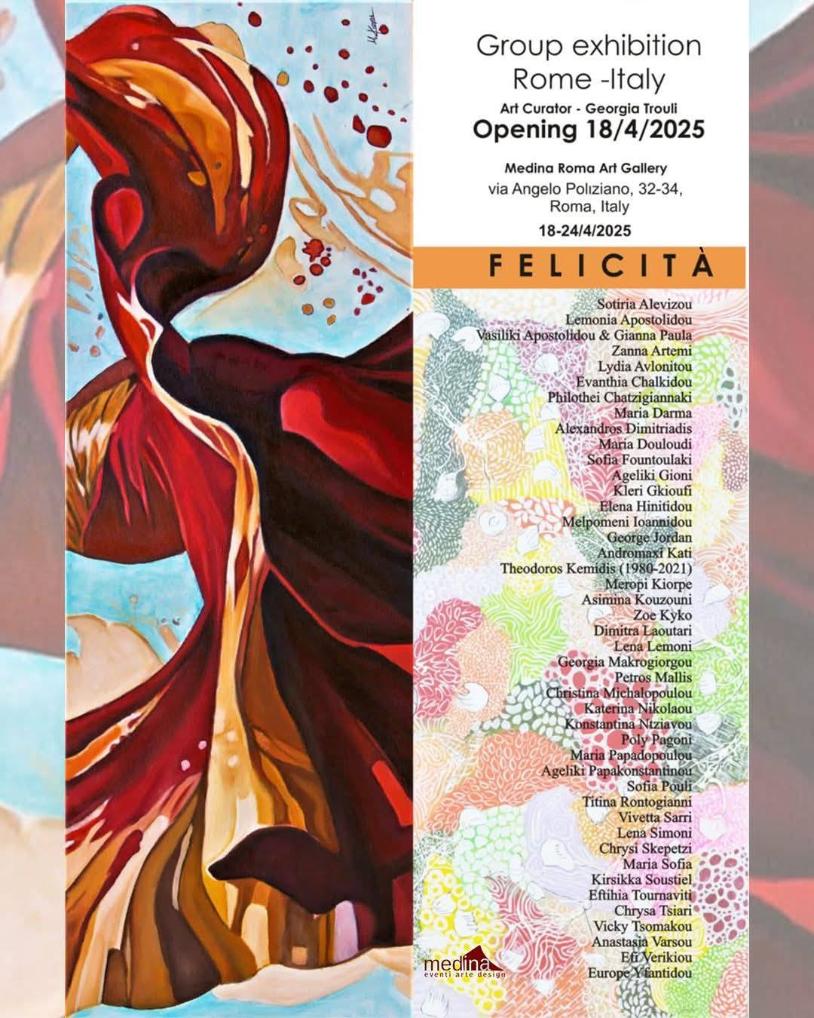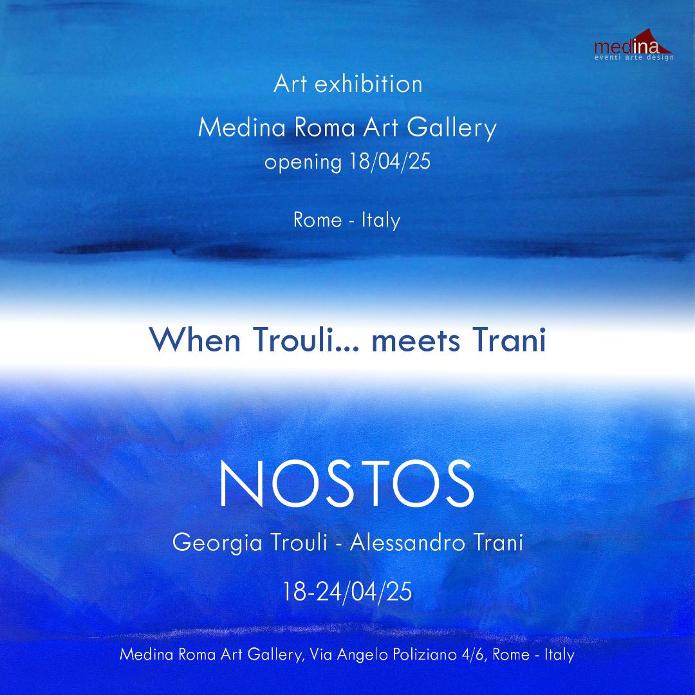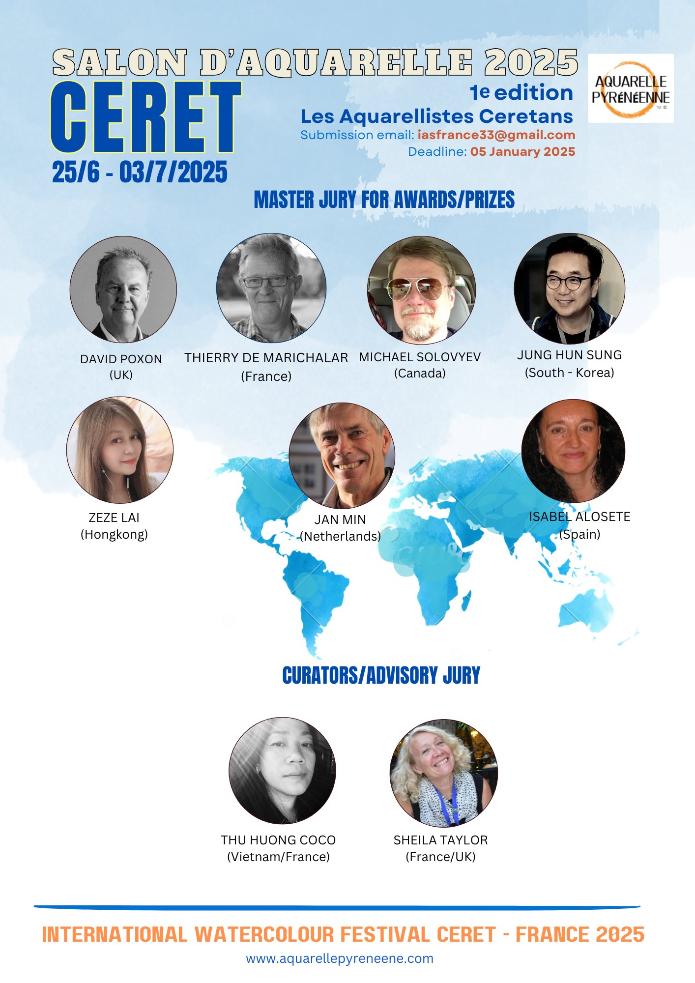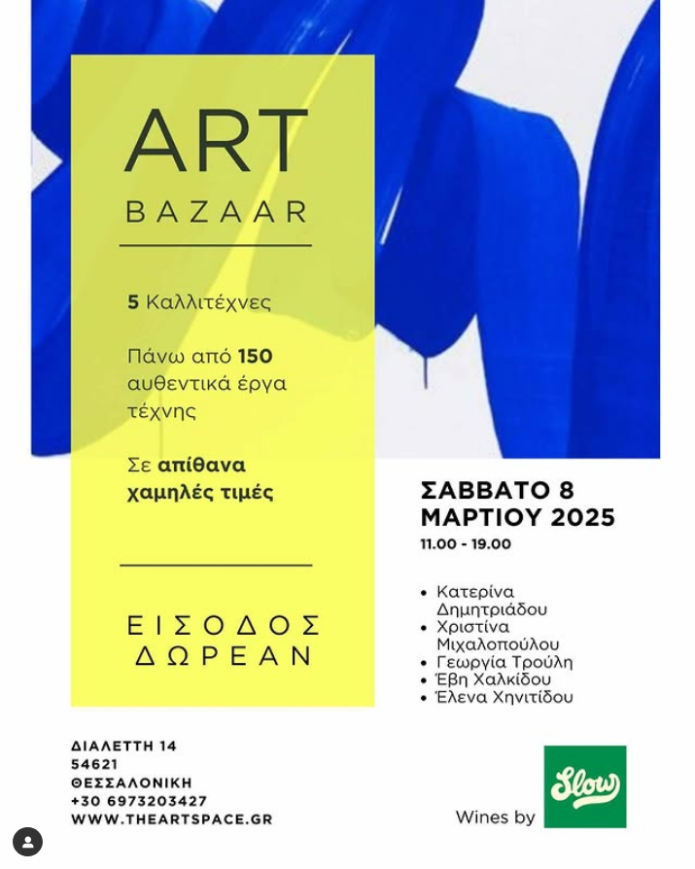NOVEMBER 2025
(2ας Μεραρχίας και Κουντουριώτου 182, Πασαλιμάνι-Πειραιάς,ΤΚ 185 31)
και ART WAY παρουσιάζουν
08 Νοεμβρίου – 12 Νοεμβρίου 2025
Ομαδική Έκθεση Εικαστικών
ΘΕΜΑ : «ΑΙΓΑΙΟ ΦΩΣ ΕΛΛΗΝΙΚΟ»
Η ART WAY η διαρκώς ανανεωμένη ομάδα εικαστικών που μέσα από την τέχνη δίνει απαντήσεις στα σύγχρονα ζητήματα των καιρών μας επιστρέφει μετά από πέντε μήνες απουσίας συνεχίζοντας το ταξίδι που πριν πολλά χρόνια ξεκίνησε ο μεγάλος Εικαστικός - Επιμελητής Γιώργος Σάρδης. Ένα ταξίδι με ρίζες στο όραμα του και βλέμμα προσηλωμένο στο μέλλον.
Η συνεχής είσοδος νέων καλλιτεχνών σε συνδυασμό με την πίστη όσων επί σειρά ετών με τη διαρκή συμμετοχή και παρουσία τους στηρίζουν το έργο μας αποδεικνύει ότι το πνεύμα συνεργασίας και εμπιστοσύνης οδηγούν σε μια μαγική χώρα φωτός και πολιτισμού.
Η τωρινή μας έκθεση μοσχοβολά Ελλάδα και ΑΙΓΑΙΟ ένας συνδυασμός που απλώνει το φως του στα πέρατα του κόσμου, διευρύνει την ύπαρξή μας και μας φανερώνει το πραγματικό νόημά της.Οι εικαστικοί μας μεταφέρουν αυτό το γεμάτο Ελλάδα φως μέσα στα έργα τους σαν ευλογημένο ψίθυρο και που αξίζει όλοι να ακούσουμε βαδίζοντας στα όρια της σιωπής και της γαλήνης.
Πίνακες πλημμυρισμένοι από το απέραντο γαλάζιο του Αιγαίου και ηλιοβασιλέματα που κόβουν την ανάσα αλλά και με εικόνες που η κάθε ανατολή γέννησε μέσα μας.
Εδώ είναι που έρχονται στο νου τα λόγια του μεγάλου ποιητή Οδυσσέα Ελύτη : “ Ένα δειλινό στο Αιγαίο περιλαμβάνει τη χαρά και τη λύπη σε τόσες δόσεις που δε μένει στο τέλος πάρα μόνο η αλήθεια’’. Μια αλήθεια στην οποία εστιάζουν τα εκθέματα της έκθεσής μας που κατορθώνουν να μας ταξιδέψουν στην απεραντοσύνη και την αιωνιότητα του ελληνικού φωτός.
Θα προλογίσει ο Δημοσιογράφος-Συγγραφέας-Εικαστικός κ. Βαγγέλης Παπαδόπουλος.
Την εκδήλωση θα πλαισιώσει μουσικά ο καταξιωμένος σαξοφωνίστας κ. Άγγελος Καλαβρυτινός.
Σας περιμένουμε στα εγκαίνια της έκθεσης μας
με θέμα «ΑΙΓΑΙΟ ΦΩΣ ΕΛΛΗΝΙΚΟ» τα οποία θα πραγματοποιηθούν
Σάββατο 8 Νοεμβρίου 2025, ώρα 18:00
στο θέατρο ΑΥΛΑΙΑ
(2ας Μεραρχίας και Κουντουριώτου 182, Πασαλιμάνι-Πειραιάς, Τ.Κ.185 31)
για την ARTWAY,
+Γιώργος Σάρδης-Εικαστικός-Επιμελητής
Αφροδίτη Δρακοπούλου Σάρδη-Κωνσταντίνος Λαγός - Επιμέλεια έκθεσης
Κατερίνα Μαυριγκοπούλου - Δημόσιες Σχέσεις
κιν. 6998-187749
ΑΝΟΙΧΤΑ : Κυριακή 9/11, Δευτέρα 10/11, Τρίτη 11/11 & Τετάρτη 12/11, ώρες 12:00-20:00
ΤΙΜΩΜΕΝΟΙ ΚΑΛΛΙΤΕΧΝΕΣ
+ΣΑΡΔΗΣ ΓΙΩΡΓΟΣ (Πρόεδρος ΑRT WAY- Εικαστικός – Επιμελητής)
ΠΑΠΑΔΟΠΟΥΛΟΣ ΒΑΓΓΕΛΗΣ (Δημοσιογράφος-Συγγραφέας-Εικαστικός)
ΣΙΔΗΡΟΠΟΥΛΟΣ ΚΩΝΣΤΑΝΤΙΝΟΣ (Διδάκτορας Βιολογίας , Εικαστικός, ποιητής-στιχουργός)
ΑΡΜΑΟΥ ΕΛΙΝΑ
ΑΡΧΟΝΤΗ ΣΟΥΖΥ
ΒΡΥΩΝΗ ΡΟΥΜΠΙΝΗ
ΓΑΓΛΙΑ ΚΥΡΙΑΚΗ
ΓΙΑΝΝΑΔΑΚΗ ΜΑΡΙΑ
ΔΗΜΗΝΑ ΓΕΩΡΓΙΑ
ΔΗΜΗΤΣΑ ΟΛΓΑ
ΗΛΙΑΔΗ ΜΑΡΗ
ΘΡΕΨΙΑΔΗΣ ΒΑΣΙΛΗΣ
ΖΕΡΦΥΡΙΔΟΥ ΣΟΦΙΑ
ΖΩΝΤΑΝΟΥ ΝΑΤΑΣΑ
ΚΑΙΣΑΡΕΥΣ ΜΑΝΤΙΚΑ
ΚΑΛΙΑΝΙΩΤΗ ΑΜΑΛΙΑ
ΚΑΜΠΗ ΧΡΙΣΤΙΑΝΑ
ΚΑΠΟΔΙΣΤΡΙΑ ΜΑΡΓΑΡΙΤΑ
ΚΟΡΔΑΤΖΑΚΗΣ ΑΠΟΣΤΟΛΟΣ
ΚΟΤΡΙΔΗΣ ΜΑΚΗΣ
ΚΟΥΚΟΥΛΙΑ ΕΥΑ
ΚΟΥΡΚΟΥΤΗΣ ΕΥΣΤΡΑΤΙΟΣ
ΚΡΙΚΗ ΑΚΡΙΒΗ
ΚΥΠΑΡΙΣΣΗ ΑΘΗΝΑ
ΚΩΝΣΤΑΝΤΑΚΟΠΟΥΛΟΣ ΕΠΑΜΕΙΝΩΝΔΑΣ
ΛΙΑΓΚΑ ΑΓΓΕΛΙΚΗ
ΛΥΕΡΟΥ ΣΟΦΙΑ
ΜΑΝΕΤΑ ΟΛΓΑ
ΜΙΜΗ ΣΟΦΙΑ
ΜΙΜΟΖΑ ΑΡΑΠΗ
ΜΙΧΑΗΛΙΔΟΥ ΜΑΡΙΑ
ΜΗΝΑ ΝΙΚΟΛΕΤΤΑ
ΜΟΝΤΣΕΝΙΓΟΥ ΚΑΡΒΕΛΑ ΕΛΕΝΑ
ΜΟΥΣΙΟΥ ΙΟΥΛΙΑ
ΝΑΚΑ ΜΑΡΓΑΡΙΤΑ
PAISI HELGA ELENA
ΠΑΝΤΟΠΟΥΛΟΥ ΑΛΚΗΣΤΗ
ΠΑΠΑΔΑΚΗ ΝΟΕΛΑ
ΠΑΤΕΡΑΚΗΣ ΚΩΣΤΑΣ
ΠΑΥΛΙΔΟΥ ΝΑΤΑΣΑ
ΠΗΤΕΡΣΟΝ ΑΛΙΚΗ
ΠΟΙΜΕΝΙΔΟΥ ΝΟΠΗ
ΣΑΡΡΗ ΑΝΝΑ
ΣΙΔΗΡΟΠΟΥΛΟΥ ΜΑΡΙΑ
ΣΚΑΛΙΩΤΗΣ ΣΠΥΡΟΣ
ΣΤΕΡΓΙΟΥ ΕΛΕΝΑ
ΣΤΕΦΑΝΑΤΟΥ ΑΝΝΑ
TATSIS LIPARI THEODOSIA
ΤΡΙΠΟΔΑΚΗ ΕΛΕΝΗ
ΤΣΑΒΟΛΑΚΗ ΦΙΛΙΑ
ΤΣΙΒΡΑ ΒΑΣΙΑ
Μαζί μας και η μόλις 7 ετών χαρισματική ΑΝΝΑ-ΜΑΡΙΑ ΒΡΑΧΑΤΗ
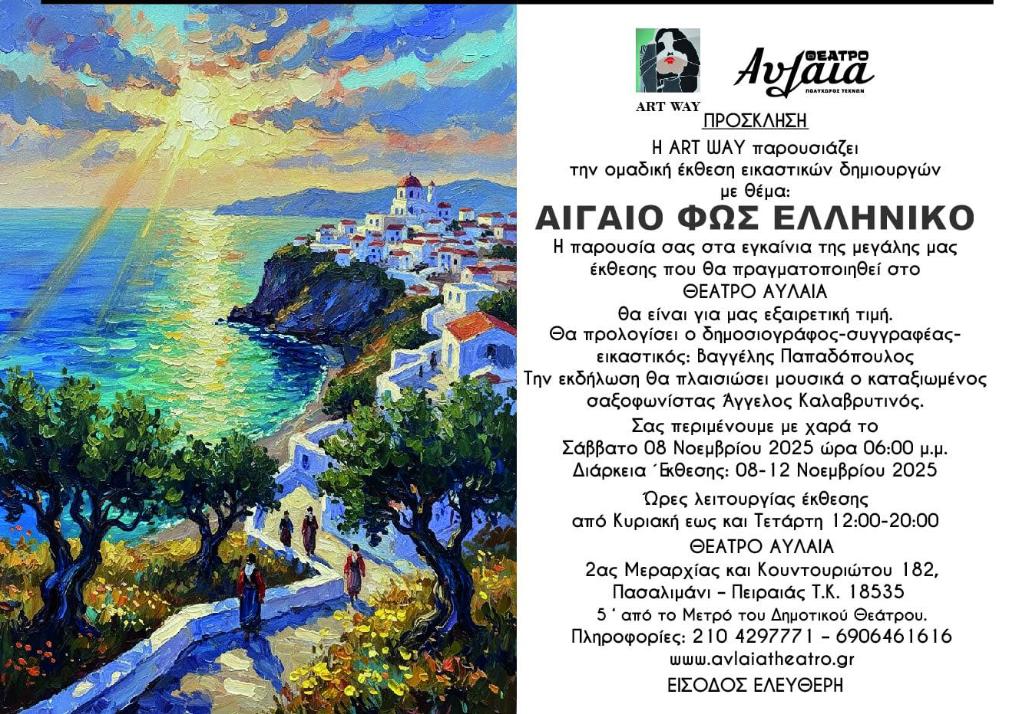
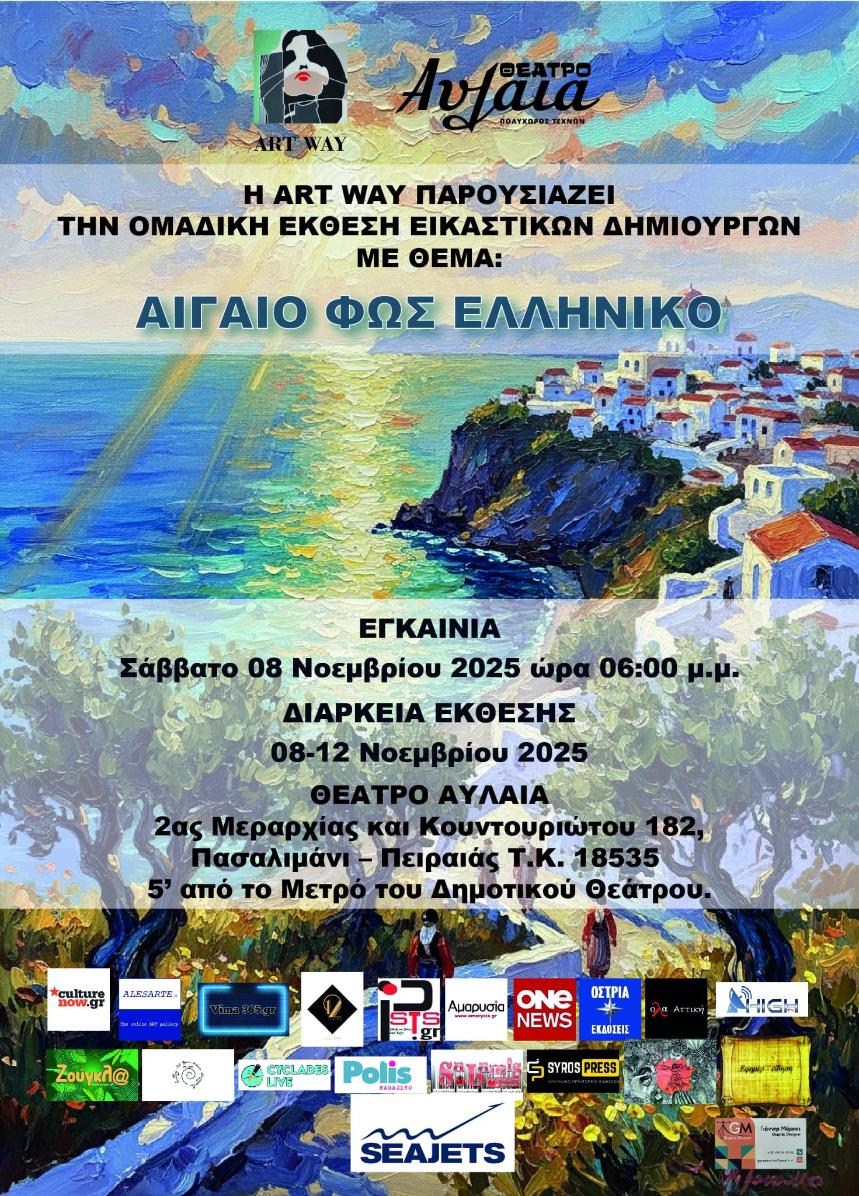
SEPTEMBER - OCTOBER 2025
JUNE - AUGUST 2025
APRIL- MAY 2025
FELICITA – GROUP EXHIBITION
With the renowned Italian song ‘Felicita’ as our basis, we will be creating works and hosting a unique experience in Rome.
The word ‘Happiness’ is an oft-said word, a much-discussed concept, both ordinary and complex, not amenable to specific definitions, nor to experimental documentation. It raises several questions as to what it actually is, how it is actually experienced and approached, both by individuals themselves and by the theoretical disciplines that have discussed it, such as philosophy, psychology, and theology.
Is happiness a subjective state of being, subject to personal value judgments? Is it an emotion, a mood, or an experience? Is it an aim, a desire, or a utopia for some people, while also an everyday experience, a state of life for others? Are there only happy moments, or can happiness become a permanent state?
How does one define the presence and absence of happiness? Aristotle and Plato discussed the concept of happiness, with the former speaking of the highest ‘eudaimonia’ and bliss, a synergy with the will of God, separating it as a concept from ‘happiness’, which he considers perhaps accidental and temporary when compared to ‘eudaimonia’. Plato, on the other hand, defined happiness as one’s ability to see the essence of things. Did he believe that we would find the essence of human happiness if we could identify the miracle of life.
Religions and other philosophical systems from the East believe that achieving happiness requires a constant struggle, which includes meditation and discipline. It is said that one achieves absolute happiness when one ceases to focus on the past or the future and simply exists in the hear and now. This state of permanent happiness is called “enlightenment”.
In any case, we will have the chance to feel these happy moments during the group exhibition to be held during Easter 2025.
FELICITA
H ΄Ευτυχία’ λέξη χιλιοειπωμένη, έννοια πολυσυζητημένη, έννοια καθημερινή και δυσνόητη που δεν επιδέχεται συγκεκριμένους ορισμούς ούτε και πειραματική τεκμηρίωση. Εγείρει πολλά ερωτήματα για το ποια πραγματικά είναι και για το πώς βιώνεται και προσεγγίζεται τόσο από το ίδιο το άτομο όσο και από τα θεωρητικά πεδία που ασχολήθηκαν μαζί της, όπως η φιλοσοφία, η ψυχολογία, η θεολογία.
Είναι η ευτυχία υποκειμενική κατάσταση και υπόκειται σε προσωπικές αξιολογικές κρίσεις; Είναι συναίσθημα, διάθεση ή βίωμα; Είναι στόχος, επιθυμία ή ουτοπία για κάποιους ανθρώπους ενώ για άλλους αποτελεί καθημερινό βίωμα, κατάσταση ζωής; Υπάρχουν μόνο οι ευτυχισμένες στιγμές ή μπορεί να αποτελέσει μόνιμη κατάσταση;
Πώς καθορίζεται η παρουσία της και η έλλειψη της; Ο Αριστοτέλης και ο Πλάτωνας ασχολήθηκαν με την έννοια της ευτυχίας και ο μεν πρώτος μίλησε για ύψιστη ‘ευδαιμονία’ και μακαριότητα, συνέργεια με την θέληση του Θεού, την διαχωρίζει ως έννοια από την ευτυχία την οποία την θεωρεί ίσως τυχαία και πρόσκαιρη σε σχέση με την ευδαιμονία. Ο Πλάτωνας πάλι όρισε την ευτυχία ως την ικανότητα του ανθρώπου να δει την ουσία των πραγμάτων. Πιστεύει ότι εάν ο άνθρωπος αναγνωρίσει το θαύμα της ζωής, τότε θα βρει την ουσία της ανθρώπινης ευτυχίας.
Θρησκείες και άλλα φιλοσοφικά συστήματα της Ανατολής θεωρούν πως για να κατακτήσεις την ευτυχία χρειάζεται ένας συνεχής αγώνας που συμπεριλαμβάνει τον διαλογισμό και την πειθαρχία. Αναφέρεται πως ο άνθρωπος κατακτά την απόλυτη ευτυχία όταν παύει να έχει το νου στο παρελθόν ή το μέλλον και βρίσκεται στο εδώ και το τώρα. Η κατάσταση της μόνιμης ευτυχίας ονομάζεται ‘φώτιση’.
Όπως και να χει, μπορούμε να νιώσουμε τις ευτυχισμένες στιγμές σε αυτήν την ομαδική έκθεση το Πάσχα του 2025
‘’Ευτυχία είναι ένα ποτήρι κρασί με ένα σάντουιτς
Η ευτυχία είναι ν’ αφήνεις ένα σημείωμα μεσ’ στο συρτάρι
Η ευτυχία είναι να τραγουδάν δυο φωνές πόσο μ’ αρέσεις.
Η ευτυχία ευτυχία
Η ευτυχία είναι ένα πουπουλένιο μαξιλάρι και το νερό του ποταμού που κυλά και φεύγει
Είναι η βροχή που πέφτει πίσω απ’ τις κουρτίνες
Η ευτυχία είναι να χαμηλώνεις το φως για να ειρηνέψεις
Η ευτυχία ευτυχία
Νιώσε τον αέρα είναι κιόλας
το τραγούδι της αγάπης μας που ταξιδεύει
σαν μια σκέψη που ξέρει την ευτυχία
Νιώσε τον αέρα είναι κιόλας
μια θερμή ηλιαχτίδα που ταξιδεύει
σαν ένα χαμόγελο που ξέρει την ευτυχία…’’
JANUARY - FEBRUARY - MARCH 2025
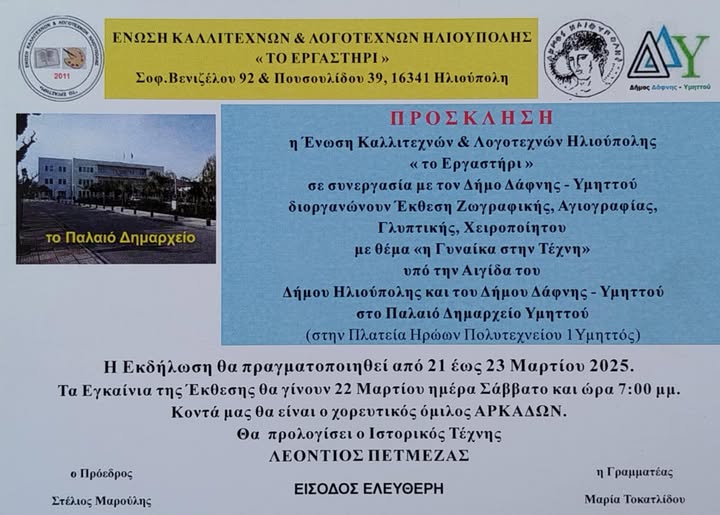
© Copyright ALESARTE the online ART gallery
